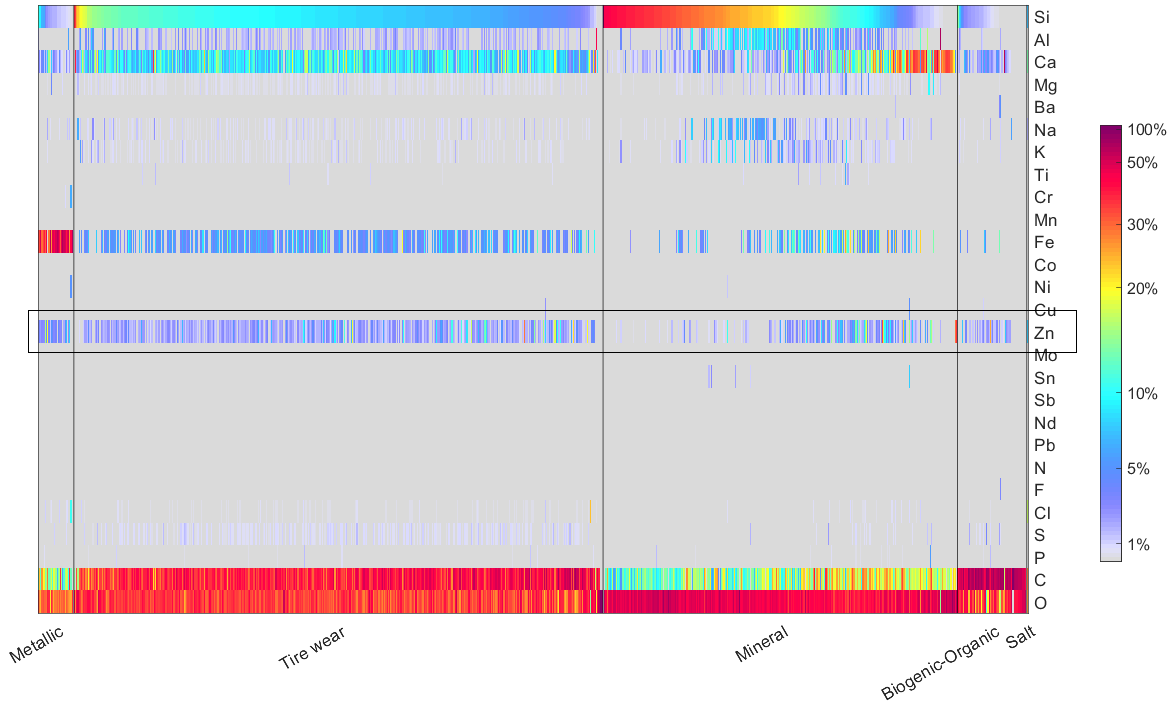Leaching and incorporation of Zn from surface to environmental particles: A case study generating plenty of questions
In the last years we have analyzed multiple dust samples from different surfaces.
In this blog, we want to tell you about the results obtained from one specific near traffic sample. The sample was taken for internal research, but we want to share the results as we think that they are interesting and valuable for further research on non-exhaust traffic-related emissions/immissions.
Sampled particles were naturally deposited on a metallic box (1 meter elevation) in a traffic canyon (unknown deposition time). This sample location was not directly exposed to precipitation.
The collected dust was dispersed on a boron substrate and analyzed by SEM/EDX single particle analysis following Rausch et al., 2022. We looked at small particles (1-20 µm) and at large particles (20-125 µm), separately.

Figure 1: Heatmap showing the elemental composition of 855 particles collected on a galvanized surface in an urban canyon site. Particles are grouped in the main morpho-chemical classes found in coarse dust: metallic wear, tire wear, mineral particles, biogenic/organic particles and salts.
Besides finding traffic-related particles that we expected (metallic wear, tire wear, mineral particles from the road and biogenic/non-differentiated organic particles), we found that the vast majority of the particles had abnormal high concentrations of zinc (Zn), independently of the particle type (see Figure 1, heatmap).
By a closer inspection of the sampled surface it was clear that the surface was galvanized. Galvanization with Zn is widely used as protection against corrosion. So, the easiest conclusion is that the Zn comes from the surface.
What is the point of this observation? First, these results remind us that Zn can be mobilized easily and that it can attach to particles or anything that is in contact to the surface. This process is well known, but it has implications for the faith of Zn in environments near road, if we believe that a considerable amount of environmental non-exhaust particles is subjected to repeated resuspension. This implies that a particle that is in contact with a galvanized surface can incorporate Zn. This Zn will contribute to the total Zn in the sample (e.g. quartz fibre filter) measured for instance by bulk methodologies like ICPMS/AES. This will certainly not have a huge impact on the Zn content of PM, but it will influence the resulting source apportionment of the particles in this specific sample. Therefore, the multiple sources and potential leaching of Zn should be kept in mind for such special situations and for any interpretation when abnormally high Zn concentrations are observed.
On the other hand, this example reminds us that this process can also go in the other direction. Particles that are primary rich in Zn might partially have depleted Zn content due to leaching.
